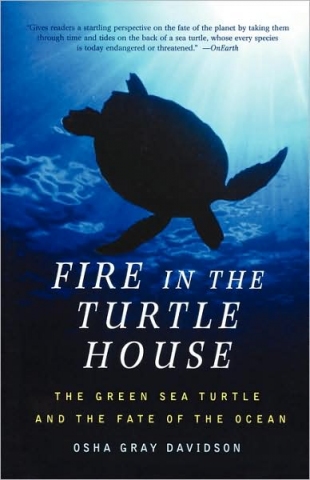" 'Dust to dust,' says the Bible, but 'water to water' is more like it, for all life comes from and returns to the sea. Our ocean origins abide within us, our secret marine history. The chemical makeup of our blood is strikingly similar to seawater. . . . The ocean is the cradle of life on our planet, and it remains the axis of existence, the locus of planetary biodiversity," writes Osha Gray Davidson in this eye-opening environmental masterwork.
Creatures have been disappearing from the face of the earth in increasing numbers while people pay no attention — it's just "another day, another extinction." These losses are still viewed as the price that must be paid for human progress. Davidson traces the story of Steller's sea cow, one marine extinction. But the heart and soul of this ecological cry of the heart is a wide-ranging account of an epidemic that is threatening six of the seven remaining species of sea turtles.
A small band of deeply committed and intrepid marine biologists and veterinarians are trying to unravel the source and cause of a mysterious and deadly plague attacking these reptiles called fibropapillomatosis (FP). This tumorous disease has been found in sea turtles in every ocean basin of the world. The threatened creatures are one of the marvels of evolution having been on Earth for at least 110 million years!
Davidson explores the ways human beings have been the main threats to marine biodiversity. There is startling material here on overhunting, habitat destruction, global warming, and pathogen pollution or the introduction of disease-causing agents into new environments.
One distressing section looks at the practice of "trawl-trash" — all the dead or dying species spread out on the deck of shrimp trawlers. Davidson helps us to see that since we are all children of the sea, it is in our best interests to stop treating the oceans as trash bins and see them instead as sacred.
